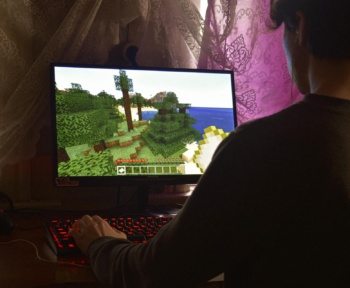The gaming industry’s current obsession with remakes and remasters has reached unprecedented levels, with over 40% of AAA releases in 2025 being reimaginings of existing games. This trend, driven by risk aversion, technological advancement, and nostalgia marketing, has fundamentally altered development priorities and player expectations.
The Economic Logic of Remakes
Remakes offer publishers significantly reduced financial risk compared to original IP. Market research is essentially complete—the original game’s success proves audience demand. Development costs, while substantial for full remakes, remain 30-50% lower than creating new franchises from scratch. Marketing costs decrease as brand recognition already exists, requiring only reactivation rather than establishment.
The financial performance of remakes consistently exceeds expectations. Resident Evil 4 remake sold 8 million copies in nine months, surpassing many new IP launches. Final Fantasy VII Rebirth achieved similar success despite being a partial remake of a 27-year-old game. These successes reinforce publisher commitment to remake strategies.
The reduced development time for remakes enables more predictable release schedules. While new IP might require 5-7 years of development, remakes typically complete in 2-4 years. This shorter timeline improves return on investment calculations and reduces the risk of market changes during development.
Technical Justifications and Enhancements
Modern remakes do more than upgrade graphics—they fundamentally reimagine games for contemporary audiences. Dead Space remake added previously impossible gameplay mechanics like zero-gravity sequences and seamless level transitions. These technical improvements justify premium pricing while attracting both nostalgic fans and new players.
Ray tracing and advanced lighting transform atmospheric games dramatically. Horror titles particularly benefit, with dynamic shadows and reflections creating tension impossible on original hardware. The Silent Hill 2 remake leverages these technologies to enhance psychological horror beyond simple jump scares.
Accessibility features absent from original releases make classic games playable for broader audiences. Difficulty options, colorblind modes, subtitle customization, and control remapping open games to players who couldn’t enjoy originals. This inclusive approach expands market reach while generating positive publicity.
The Nostalgia Industrial Complex
Gaming has reached a maturity where multiple generations have nostalgic connections to different eras. Players who grew up with PlayStation 1 are now affluent 30-40 year-olds with disposable income. This demographic happily pays premium prices to relive childhood memories with modern conveniences.
The “memberberry” effect—where familiar elements trigger positive emotions regardless of quality—drives remake marketing. Trailers emphasizing iconic moments, music remixes of classic themes, and careful recreation of memorable locations generate emotional responses that bypass critical evaluation.
Social media amplifies nostalgia marketing through viral moments of recognition. Side-by-side comparisons, “you vs. the guy she told you not to worry about” memes, and reaction videos to remake announcements generate free marketing worth millions. This organic promotion reduces traditional advertising needs.
Creative Opportunities and Constraints
Remakes provide developers opportunities to fulfill original visions limited by technology. Demon’s Souls remake realized the artistic ambitions constrained by PS3 hardware. Developers describe remakes as chances to create games they wished they could have made originally.
However, remakes also constrain creativity through fan expectations. Deviating too far from originals generates backlash, while insufficient changes prompt “cash grab” accusations. Developers must navigate narrow paths between innovation and preservation, often resulting in safe, conservative design choices.
The talent development aspect of remakes provides junior developers experience with proven design frameworks. Working on remakes teaches fundamental skills while reducing pressure of creating original content. However, critics argue this approach stunts innovation by training developers to replicate rather than create.
Different Remake Philosophies
Faithful remakes like Shadow of the Colossus preserve original gameplay while upgrading presentation. These “conservation” approaches treat games as cultural artifacts deserving preservation. Changes remain minimal, focusing on technical improvements rather than design evolution.
Reimaginings like Final Fantasy VII Remake use original games as starting points for entirely new experiences. These projects expand stories, add characters, and fundamentally alter gameplay. While controversial among purists, reimaginings can revitalize franchises for modern audiences.
Remasters occupy a middle ground, upgrading assets and resolution while maintaining original code bases. Collections like Mass Effect Legendary Edition provide definitive versions of classic games without fundamental changes. These projects offer best value but generate less excitement than full remakes.
The Death of Backward Compatibility
Publishers deliberately limit backward compatibility to sell remakes and remasters. Sony’s removal of PS3 backward compatibility from PS5 forces players to purchase remakes of games they already own. This anti-consumer practice generates short-term revenue while damaging long-term goodwill.
Digital storefronts removing original versions when remakes launch prevents price comparisons and forces remake purchases. The delisting of original Dark Souls when remastered version launched exemplifies this practice. Players lose access to purchased games unless they maintain old hardware.
The preservation crisis accelerates as online features integral to original games disappear. Remakes might restore some functionality, but multiplayer modes often remain absent. This selective preservation creates incomplete gaming history records.
Cultural Impact and Criticism
The remake trend reflects broader cultural stagnation where nostalgia substitutes for innovation. Critics argue gaming mirrors Hollywood’s sequel and remake obsession, prioritizing safe bets over artistic risk-taking. This creative conservatism potentially stunts medium growth.
Younger players without nostalgia connections increasingly question remake dominance. Gen Z players wonder why they’re playing their parents’ games with better graphics rather than experiencing new stories. This generational disconnect might limit remake appeal as demographics shift.
The opportunity cost of remake development means fewer original games. Studios dedicating resources to remakes aren’t creating new IP. This reduction in original content could create long-term problems as fewer new franchises establish themselves for future nostalgia mining.
Technical Standards and Player Expectations
Modern remakes must meet contemporary technical standards or face criticism. 60fps performance, 4K resolution, and ray tracing have become expected rather than bonus features. These requirements increase development costs, potentially negating remake economic advantages.
The comparison culture enabled by social media means every remake faces intense scrutiny. Digital Foundry analyses dissecting frame rates and resolution generate millions of views. Minor technical shortcomings become major controversies, requiring extensive post-launch patching.
Cross-generation release strategies complicate remake development. Supporting both PS4/PS5 and Xbox One/Series requires compromise. True next-generation remakes might require abandoning last-generation hardware, limiting market reach.
Franchise Management Through Remakes
Remakes serve as franchise maintenance, keeping IP relevant between major releases. While waiting for Grand Theft Auto VI, Rockstar could remake earlier entries. This strategy maintains brand visibility without rushing new development.
Testing grounds for franchise evolution, remakes allow experimentation with reduced risk. Changes in remake reception inform future development. Resident Evil 2 remake’s success influenced Resident Evil Village‘s design philosophy.
Remakes enable franchise reboots without explicitly abandoning continuity. God of War (2018) functioned as both sequel and soft reboot. This approach respects existing fans while welcoming newcomers.
International Market Considerations
Regional preferences for remakes vary significantly. Japanese audiences show stronger remake appetite, particularly for RPGs. Western markets prefer action game remakes. These differences influence remake selection and marketing strategies.
Localization improvements in remakes expand international reach. Games originally released with limited localization receive full translation and cultural adaptation. This expansion opens new markets unavailable to original releases.
Censorship and cultural sensitivity updates in remakes generate controversy. Content acceptable decades ago might require modification for modern global release. Balancing authenticity with contemporary values creates difficult decisions.
The Sustainability Question
The remake well eventually runs dry as viable candidates diminish. Most commercially viable properties from PS1/PS2 era have received or announced remakes. Publishers must eventually return to original content or remake increasingly recent games.
Remake fatigue shows early signs as sales growth slows for non-tentpole remakes. Players increasingly wait for sales rather than purchasing at launch. This behavior mirrors superhero movie fatigue, suggesting market saturation approaching.
The long-term impact on gaming culture remains uncertain. Will future generations have their own games to nostalgically remake, or will they inherit endless remakes of remakes? The answer will determine whether gaming continues evolving or becomes trapped in recursive nostalgia.





